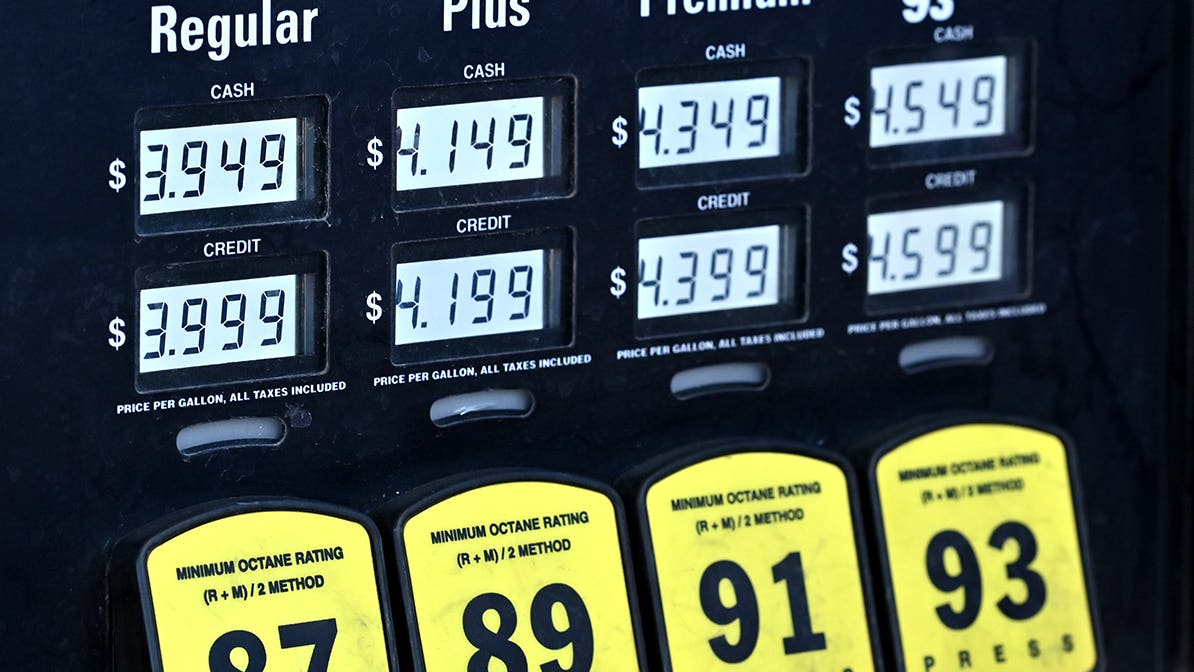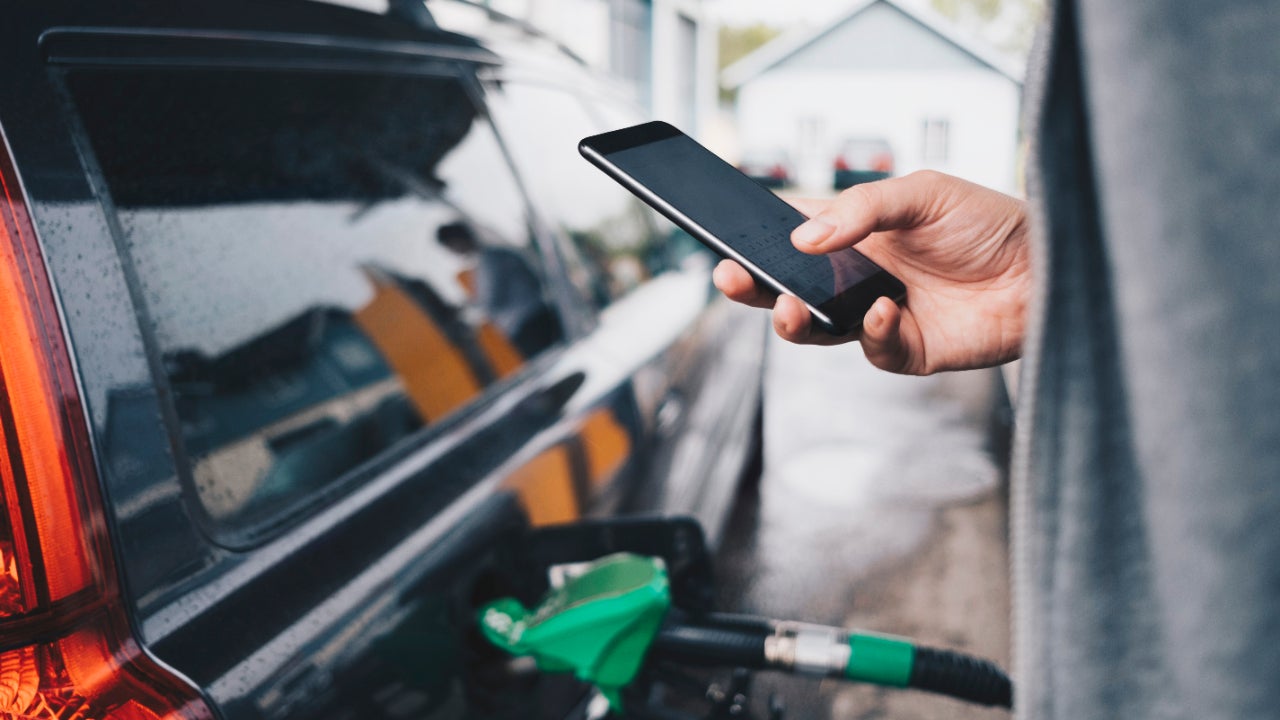As gas prices surge, here are the best gas rewards credit cards

This piece was last updated on August 11, 2023 to reflect current credit card details.
Gas prices have been on a shocking upswing, rising 48 percent over the past year and 21 percent over the past month, according to AAA. The national average for a gallon of unleaded gas was $4.27 as of March 18, down slightly from the record-high $4.33 set on March 11. In California, it was an obscene $5.80 (an all-time record).
The latest catalyst was Russia’s Feb. 24 invasion of Ukraine, but gas prices were already high for other reasons, including supply chain imbalances and strong demand as COVID cases receded.
Your best bet to save on gas is to use a gas rewards credit card—but it might not be the card you expect.
Gas stations’ cobranded cards are lackluster
An obvious choice would be to sign up for a gas station’s credit card. However, most of these cards aren’t very lucrative. The typical discount is a mere 5 to 10 cents per gallon, according to a recent Bankrate analysis of 22 cards offered by 17 popular gas retailers.
These cards are even more forgettable if you ever plan to carry a balance. The average interest rate of the 22 cards we analyzed was 25.8 percent, much higher than the average credit card APR of 16.34 percent. You’ll rarely come out ahead if you carry a balance on a rewards credit card, but the math is particularly unfavorable for gas cards.
General-purpose cards can offer much better gas rewards
A much better choice would be to sign-up for a general-purpose credit card—that is, one that can be used much more widely—with lucrative gas rewards. My no-annual-fee favorites include:
- Citi Custom Cash® Card: 5 percent cash back on your top eligible spending category each billing cycle (up to $500 in purchases, with 1 percent cash back on all other purchases).
- Sam’s Club® Mastercard®: 5 percent cash back on gas (purchased almost anywhere, not just at Sam’s Club—up to $6,000 per year). This card also gives 3 percent cash back on dining and offers enhanced rewards for Sam’s Club Plus members. Other purchases earn 1 percent cash back. The total cash back maximum per year is $5,000.
- The Discover it® Cash Back: 5 percent cash back on rotating quarterly categories (gas is a bonus category for the third quarter of 2023). The rate applies after activation on up to $1,500 in quarterly spending (then 1 percent cash back after that).
- Costco Anywhere Visa® Card by Citi*: 4 percent cash back on gas and EV charging (again, purchased almost anywhere, this time with a $7,000 annual cap), plus 3 percent cash back on eligible travel and dining, 2 percent cash back at Costco and 1 percent cash back on everything else.
- Like the Discover it® Cash Back, the Chase Freedom Flex℠* offers rotating bonus categories — including gas stations and EV charging purchases for the third-quarter of 2023. Cardholders can earn 5 percent cash back on these purchases after activation (up to $1,500 in purchases, then 1 percent).
In more normal times, most Americans should spend well below these limits. For example, in 2019, the average household spent $2,094 on gas, according to the Bureau of Labor Statistics. In 2020, that fell to $1,568 as the pandemic led most people to drive less. But with gas prices skyrocketing and more people returning to the roads for daily commutes and vacations, it’s a good time to seek out as many savings opportunities as possible.
Because these cards offer rewards as a percentage of your purchase price, they’re much more meaningful than the flat 5- or 10-cent per gallon discounts offered by gas stations’ cobranded cards; the advantage stays steady as prices climb.
Gas station apps
Another good tip is to stack your credit card rewards with a gas station’s app. Most of the major brands have these. For example, Phillips 66 is offering 10 cents off each gallon for a limited time when you pay through their app. Elsewhere, discounts of 3 to 5 cents per gallon are more common. And you can save 10 cents per gallon via Shell’s app if you pay with your checking account (since those transactions are cheaper for the retailer to process).
At the grocery store
You can also stack gas savings by buying groceries and redeeming those points at the pump. Kroger and Albertsons are among the large supermarket chains that allow customers to rack up rewards on food shopping which can translate into gas rebates. This is a great example of getting money back from purchases you would have made anyway. You’ll benefit even more by using a rewards credit card.
Research the best prices
It’s common sense to shop around for the best prices, but that can be easier said than done. I thought I recently found an amazing deal on GetUpside, but when I got to the station, the posted price was 90 cents per gallon higher than what the app was showing.
GasBuddy is another popular resource, but with prices changing so rapidly, it’s also having trouble keeping up with the latest information and the surges in website and app traffic. If you’re willing to link your debit card to GasBuddy’s payment card, you could save up to 25 cents per gallon.
Carry less junk in your trunk
The EPA says that your fuel mileage decreases by about 1 percentage point for every additional 100 pounds your car carries. If you’ve been using your trunk as a storage unit, find somewhere else to put those items.
The agency also says that your fuel mileage drops off rapidly as you exceed 50 miles per hour, so ease off the accelerator, lead foot. Avoid excessive braking and idling and consider using cruise control to smooth out your gas consumption.
Also, consider combining errands whenever possible. Working from home and cutting back on some outings could also make sense if you can.
The bottom line
Gas prices are one of the most obvious and frustrating examples of a troublesome trend: Inflation is running at its hottest pace in 40 years, the Bureau of Labor Statistics reports. Almost all Americans are noticing this trend, and a recent Bankrate survey revealed that about three in four say inflation is harming their personal finances.
Ultimately, we have a few choices. According to the Bankrate survey, the most common reaction is to cut back on some purchases to afford higher prices elsewhere. This makes sense at the household level, although it could hurt some sectors of our consumer-driven economy, particularly discretionary spending categories such as travel and dining. Others will surely cut into their savings or add to their debt. Many will probably end up doing all three.
Inflation is causing consumers to make hard choices. Revisiting your budget with an eye toward this new normal is a good first step. Additionally, seek out ways to save whenever you can. At the pump, that means a gas rewards credit card and perhaps a gas station’s payment app as well.
*The information about the Costco Anywhere Visa® Card by Citi and Chase Freedom Flex℠ has been collected independently by Bankrate. The card details have not been reviewed or approved by the issuer.
You may also like

College students: Enjoy these student card benefits


Best gas credit cards for bad credit



